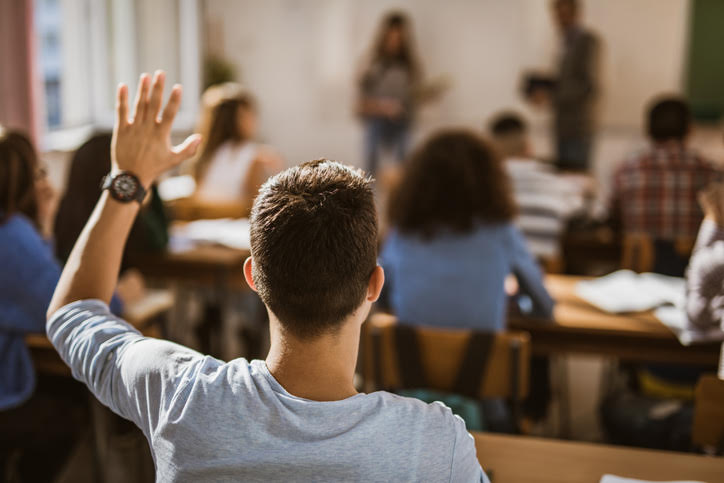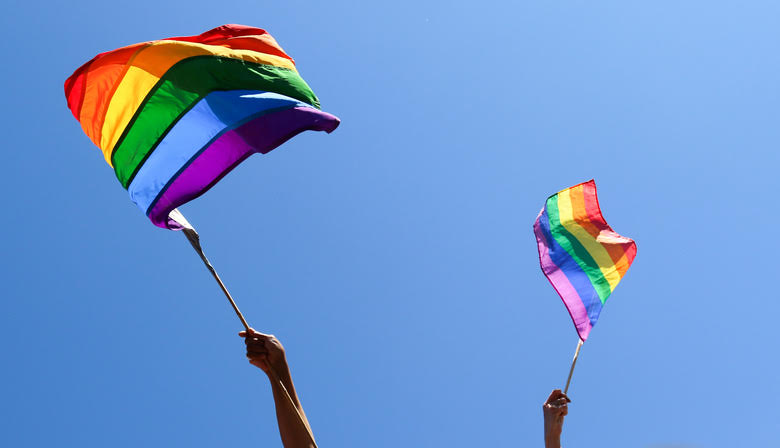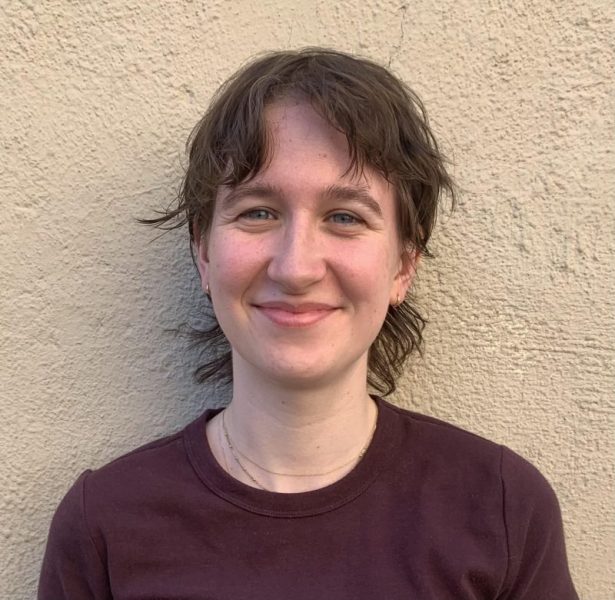SPECIAL REPORT: The Current State of Sex Ed in New York
News Based on facts, either observed and verified directly by the reporter, or reported and verified from knowledgeable sources.
With no state requirements, the nature of sex education varies wildly from Westchester to Buffalo. Controversial legislation pending in Albany could change all of that, especially for LGBTQ+ students.

Sex education instruction in New York is in a state of crisis.
With no statewide mandate requiring sex education to be taught to students in public schools throughout New York, the instruction students receive — if they receive it at all — is brief at best and harmful at worst, according to policy experts, health educators, and advocates.
Two bills currently in the New York state legislature have the power to change that.
Senate Bill S2584A and its Assembly complement, A6616, would require comprehensive sexuality instruction that is age-appropriate, medically accurate and inclusive for all students in grades kindergarten through 12 in New York’s public and charter schools. Model curricula, when developed, would have to adhere to the content and scope of national sexuality education standards.
Comprehensive sexuality education, as set forth by this legislation, would cover topics such as healthy relationships, body image and autonomy, and self-esteem.
With versions of S2584A and A6616 previously introduced in the 2017 to 2018 and 2019 to 2020 legislative sessions — both of which failed to pass — the comprehensive sexuality education bills on the 2021 to 2022 legislative docket likely face an uphill battle.
IN THE INTERIM, INDIVIDUAL SCHOOL DISTRICTS DECIDE
Without a comprehensive statewide mandate, school districts are largely left to their own devices to decide what and how they will teach sex ed. Although the state requires instruction on HIV/AIDS, policy experts and LGBTQ+ advocates say the instruction largely stigmatizes.
“When it comes to HIV/AIDS education, even though the intent is good, the follow-through with how they implement it is just not satisfactory for students,” Aliyah Ansari, Teen Health Strategist at the New York Civil Liberties Union (NYCLU), said.
HIV/AIDS education must be age-appropriate when taught to students. However, it is not required to be medically accurate, culturally appropriate or unbiased. Additionally, there is no requirement preventing it from teaching or promoting religion, and parents can opt their children out of HIV/AIDS instruction.
“What we’re consistently told [by students] is that almost all sex education does talk about gay men, but only about how they’re going to die,” Lisa Scott, Director at Westchester Jewish Community Services (WJCS) Center Lane, Westchester’s only programmatic and educational center for LGBTQ+ youth aged 13 to 21, said. “So gay men are mentioned because they’re going to die, gay women are not mentioned and trans people don’t exist.”
“Which gives people the space to say, ‘I did my HIV education because I scared the crap out of gay boys and now none of them want to have sex,’ and that’s a win.”
Ansari, who worked as an adolescent sexuality educator for the New York City Department of Health and Mental Hygiene before joining the NYCLU, highlighted that HIV/AIDS instruction — despite being a requirement — was often put off in middle and high school health classes until the end of the year. As a result, the instruction was sometimes very rushed.
When it comes to instruction that goes beyond the HIV/AIDS instruction requirement, New York state sex education often falls short.
Elizabeth Greenblatt, an independent sex educator at Newburgh-based Sex Savvy Hudson Valley, noted that no requirements for sex education at the state level lead to schools choosing to do almost nothing. Or, if they chose to do something very small, they don’t have to consider whether they’re doing it well or in an inclusive, comprehensive manner.
“There’s nothing consistent happening across the board in New York state because it really depends on where you’re going to school, what the community is like and what kind of pressure people in the community have put on the school system to address things,” Greenblatt said.
Gabrielle Doyle, State Partnerships Manager at Sex Ed for Social Change (SIECUS), echoed Greenblatt’s sentiment.
“I’m sure there are some districts that are using curriculum that is really modern and comprehensive,” Doyle said. “But, at the same time, [there are] definitely districts that are using a curriculum that could be up to decades-old, especially considering that there have been no changes to the mandates.”

LGBTQ+ INCLUSION IS OFTEN AN AFTERTHOUGHT
This makes way for a wide range of experiences in the quality of sex education taught throughout the state.
“Maybe some schools are providing more comprehensive instruction that does include topics related to comprehensive sex education, including sexual orientation and gender identity,” Doyle said. “Others will just teach the bare minimum.”
As a result of this inconsistency, students are in some cases not prepared to make healthy, informed and consensual decisions about relationships, S2584A and A6616 conclude. LGBTQ+ relationships remain an afterthought.
“LGBTQ+ sexual health education is either stigmatized or completely left out of the curriculum,” Senator Alessandra Biaggi (D-34), who is a co-sponsor of S2584A, said.
“When it is covered, it often tends to reinforce negative gender stereotypes, causing further harm to trans and nonbinary students,” Biaggi said. “If these students are unable to feel safe or seen in the classroom, then how can we say that we have done our job as lawmakers and educators?”
Biaggi, who represents the same district where she grew up and attended school, noted that she had no recollection of her own sex education instruction, which she found telling and which further encouraged her to sign onto the bill.
S2584A, Biaggi said, will ensure that LGBTQ+ issues are properly taught and included in the comprehensive sexuality education curriculum, which will, in turn, hopefully, make schools safer and protect LGBTQ+ youth from harassment and violence.
THE BROADER THE CURRICULUM, THE BETTER
As Public Policy Coordinator and Community Liaison for GLSEN’s Lower Hudson Valley Chapter, Max Micallef helps students from participating school districts’ gay-straight alliances (GSAs) in Rockland, Putnam and Westchester County identify legislative priorities to advocate for and help support in their local communities.
When Micallef asked students from participating GSAs — specifically transgender, gender nonconforming and nonbinary (TGNCNB) students — if any specific areas need to be focused on, they immediately brought up health care and sex education.
“Not only is there basically nonexistent LGBTQ+ inclusion in sex ed in our New York state schools, but, as a whole, sex education is just not taught properly, if at all,” Micallef said. “And the main issue is because it’s basically a recommendation.”
“When [sex education] is taught, if at all, it is taught from a reproductive, straight, cisgender standpoint,” Micallef said.
Without education intentionally tailored to LGBTQ+ youth, students may not know how to engage in safe sex due to not seeing themselves represented in lessons. This lack of LGBTQ+-inclusive sex education can have lasting consequences for students from adolescence through adulthood.
At least once or twice a year, Scott conducts needs assessments to better understand what issues are most pressing to LGBTQ+ youth in Westchester County. She said conversations about sex and relationships consistently fall in the top three priorities and, almost always, come first.
“It is a huge issue for them, and they know they’re not getting it,” Scott said. “They sense the unfairness, and they feel very powerless and very unsupported by that lack of education.”

EXCLUSION TIED TO ADVERSE HEALTH OUTCOMES
LGBTQ+ youth are more at risk for adverse physical and mental health outcomes than their straight counterparts when sex education curriculum excludes them.
“If you leave these gaps open, there’s more likelihood that there’s going to be anxiety for some kids,” Birdie Condon, a sex educator at Sex Savvy Hudson Valley who works alongside Greenblatt, said. “It just builds up this sense of ‘I’m different’ ”
School remains a quite hostile environment for LGBTQ+ students, even in more progressive states like New York.
With surges in transgender homicides in the United States, some LGBTQ+ advocates think trans-inclusive sex education could lower disproportionate rates of violence, discrimination and harassment against trans and gender-expansive students — particularly students of color.
“It starts out with not understanding and not knowing, that degrades towards what we perceive as ‘the other’ that then turns into physical violence,” Micallef said. “We want to nip that in the bud as early on as possible.”
“Doing that through curriculum, not only are you bringing that to students at a young age, but you’re also educating the educators in the process.”
Scott emphasized that school districts moving from reactively to proactively ensuring that their environments are safe and affirming for TGNCNB students will likely require a major shift.
“It’s almost always reactive and responsive, and quite frequently, it’s reactive and responsive to something bad that happened to a trans kid in their space,” Scott said.
Advocates say pushback school districts face in taking strides toward inclusivity should not outweigh LGBTQ+ students’ safety and rights.
“The fear of acting and upsetting people maintains an environment where the suicide rates, the dropout rates, the teen pregnancy rates and the homelessness rates for LGBTQ+ youth are higher than their straight and cis counterparts,” Scott said. “And that means the rules have to change because our kids are not safe and they need to be, especially in schools.”
Next week, in part two of our special report, hear from those at the center of this issue whose lives are affected the most: LGBTQ+ students, their parents, and the educators who would have to implement changes.
Bailey Hosfelt is a full-time Reporter at Examiner Media, covering LGBTQ+ issues, climate change, the environment, and more. You can follow Bailey on Twitter at @baileyhosfelt.

Bailey has journalism experience covering local news in Westchester and Putnam counties and New York City on topics related to LGBTQ+ issues, women’s rights, climate change, the environment, and local politics. They have been a full-time reporter with Examiner Media since July 2021. Read more details from Bailey’s bio here. Read Bailey’s archived work here: https://www.theexaminernews.com/author/baileyhosfelt/
